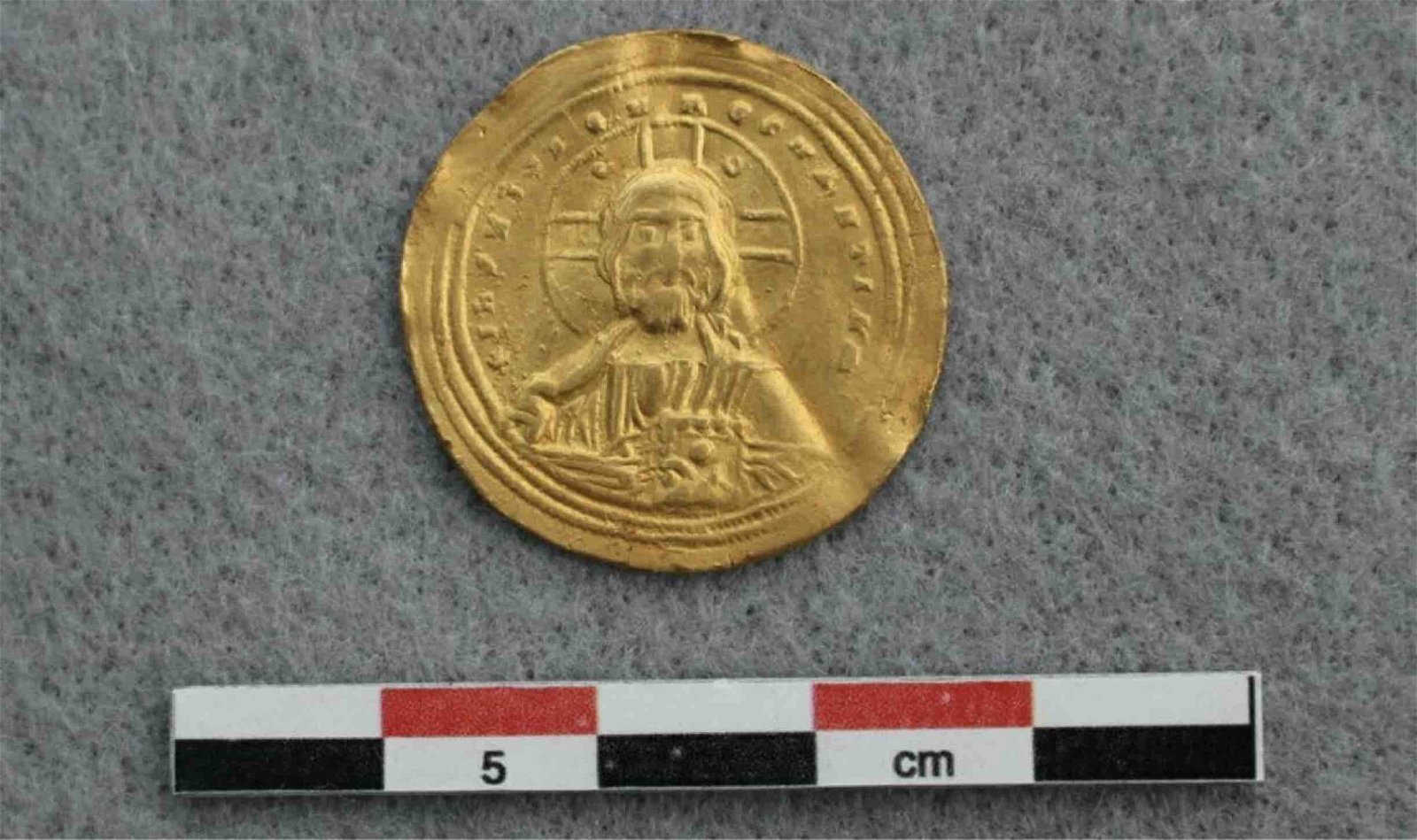An unusual artifact discovered near Vestre Slidre in Norway’s mountainous Valdres region is prompting investigations by archaeologists, after a rare Byzantine coin was revealed with the aid of a metal detector.
Questions remain as to how the coin found its way more than 1,600 miles from Constantinople, capital of the East Roman or Byzantine Empire, where it was likely minted more than a thousand years ago.
During this period, several mints were operated in both the Empire’s capital, as well as several in surrounding urban centers that operated up until the 7th century.
Described as being in pristine condition for its age, dotted circles along the edges of the coin recently recovered in Norway indicated that it was likely minted sometime between 977 and 1025 C.E.
Like many coins from this era and location, the artifact depicts Jesus Christ holding a Bible on one side, accompanied by the Latin inscription “Jesus Christ, King of those who reign.” The reverse side depicts the brothers Basil II and Constantine VII, and is accompanied by a Greek inscription reading, “Basil and Constantine, emperors of the Romans.”


Formally known as a histamenon nomisma, meaning “standard coin,” this name was given to the standard variety of gold solidus coin following the introduction of the lighter tetarteron, or “quarter coin”, also cast from gold and circulated beginning in the 960s. The histamenon, also simply known as the stamenon, was discontinued in 1092.
Although how the coin found its way to Norway remains somewhat in question, archaeologists believe that it could have been owned by the famed ruler Harald III of Norway, who ruled from 1045 until 1066. Harald would likely have acquired it while serving as a guardian of Byzantine royalty in the 1030s.
According to customs of the period, guards were entitled to plunder the palace of an Emperor following their deaths, three of which had occurred during the time “Harald the Ruthless” spent as a guard in Byzantium.
However, not everyone endorses the idea that the coin had been a memento kept by the Norwegian ruler.
“The coin doesn’t look like it has been in circulation for that many years,” according to Svein Harald Gullbekk, a professor with the Museum of Cultural History in Oslo, who told Sciencenorway.no that “it might be a stretch to think that it came with Harald when he returned home.”
Other artifact discoveries made by metal detectorists in Norway this year include jewelry such as brooches and a thinly beaten golden plate known as a bracteate that dates to between 400-570 AD. Bracteates of the sort discovered in Norway recently were popular imitations of Roman medallions from that period.
Presently, archaeologists hope to visit Vestre Slidre again in 2024 to determine whether further excavations of the area near where the coin was unearthed would be beneficial.
Micah Hanks is the Editor-in-Chief and Co-Founder of The Debrief. He can be reached by email at micah@thedebrief.org. Follow his work at micahhanks.com and on X: @MicahHanks.

